
How Do Planes Fly? The Basics of Flight Dynamics
Planes can fly because their wings induce a pressure difference between their top and bottom sides that results in an upwards force which lifts the plane.
But how exactly is this pressure difference generated? We will explain it in this article.
Pressure and velocity
Fluid dynamics theory states that the molecules within a fluid move at two different speeds.
Due to conservation of momentum, if a stream of air increases its velocity its molecules will not have energy left to continue shaking at the same rate. The molecules are forced to reduce their shaking, leading to a reduction in pressure. This is what gives engineers free hands: by controlling the speed of the air over the wing, they can also control the pressure it will induce on the wing.
The engines of the plane don't provide any lift. They only push the plane forward, either to accelerate it or compensate for the drag induced by the air as it passes over the wings and fuselage.
Wing aerodynamics
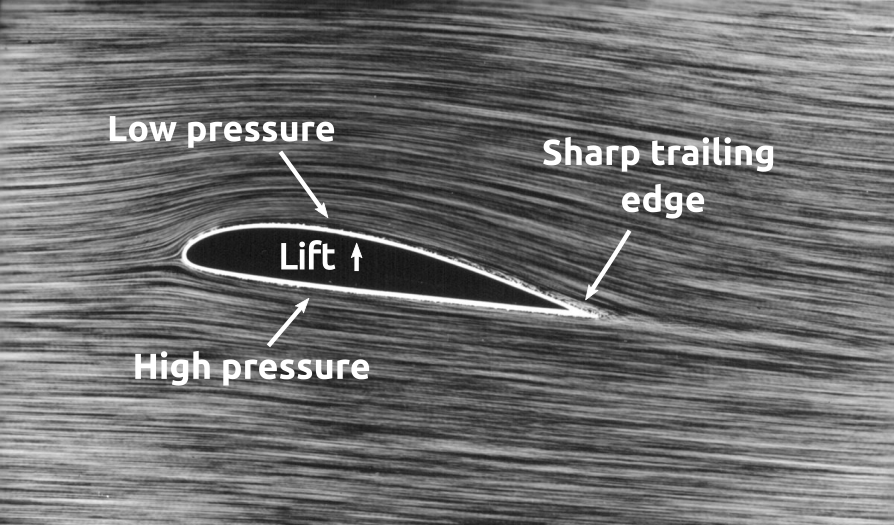
To control the air velocity, the geometry of the wing is designed with two main features:
The goal of these two parameters is the same: squeeze the air above the wing by reducing the space available for it to continue straight. This causes a velocity increase, resulting in a low pressure region. At the bottom the air is not forced over a steep obstacle as at the top. This allows it to take a lower speed, causing a high pressure region. The difference in pressure is what causes the upwards lift.
The top and bottom air flows don't merge simultaneously at the end of the wing. The higher velocity at the top makes this section arrive “first”, merging with the slower air below and pushing it slightly downwards. Having a smooth merge between the two flows is beneficial since it reduces drag. Therefore, wings are always designed with a sharp trailing edge rather than a blunt one.
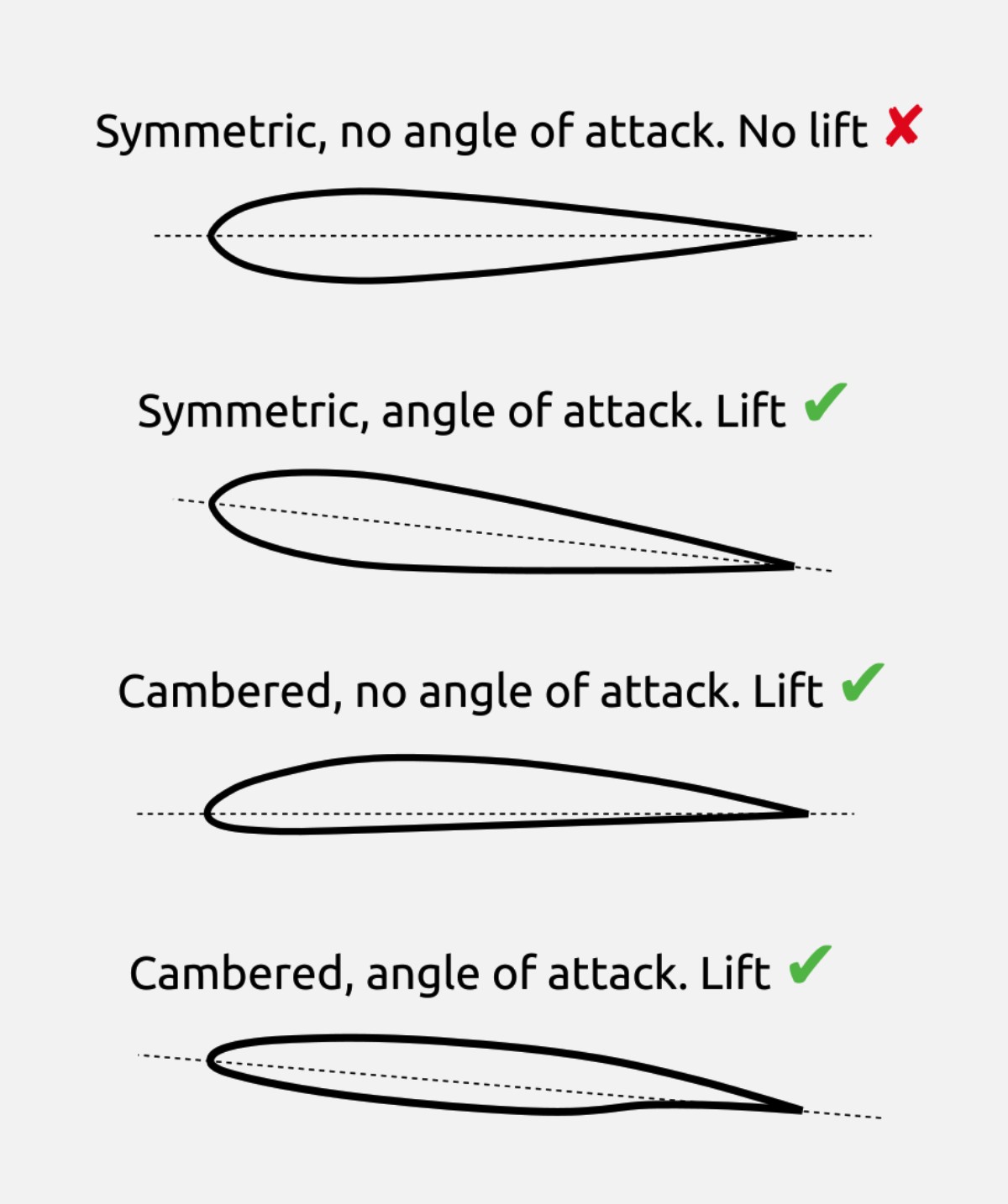
Perfectly symmetric airfoils can't generate any lift unless an angle of attack is used. On the other hand, cambered wings can generate lift even at zero angle of attack.
Commercial planes use cambered wings with angles of attack of about 2.5 degrees. The angle of attack can reach 10 degrees during the climb to cruise altitudes, but it is not recommended that it exceeds 15 degrees, since might stall the plane.
Acrobatic planes are use symmetric wings and base all their lift on the angle of attack, enabling them to fly upside down.
The Bernoulli vs Newton battle
If you have read other sources on “how do planes fly”, you most likely observed that there is a battle between those who explain it using Bernoulli's principle vs other supporting Newton's third law of action-reaction.
We can settle the debate here. All fluid motion is governed by a detailed version of Newton's second law of motion: the Navier-Stokes equations. Bernoulli's principle states that under certain conditions, such equations can be simplified to provide the useful relation between pressure and velocity that we outlined here.
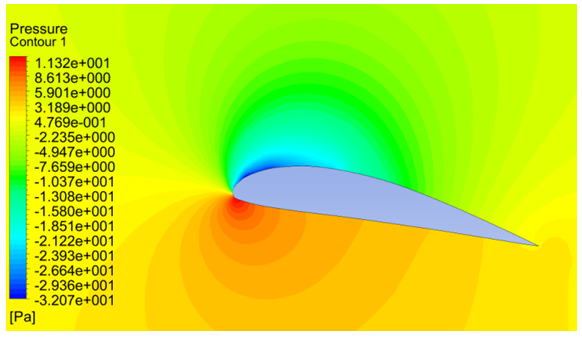
The winner is therefore Newton's law(s), in the sense that it represents universally valid physics. However, over-simplifications of Newton's law to statements such as “lift is the reaction force when the air hits an inclined surface” are not entirely correct, as they neglect the low pressure region at the top. Bernoulli's principle provides a better picture thanks to its explanation on pressure-velocity coupling, but it obviously can't account for all the physics of lift either.
At the end, if you want an accurate estimate on the lift, you have to resolve the Navier-Stokes equations over the wing (or better, make an experiment and measure it). If you only have pen and paper at hand, I suggest looking at the Kutta–Joukowski theorem.
We should also clarify that Bernoulli's principle has nothing to do with the incorrect explanation on lift known as the "equal transit theorem". Bernoulli was born in 1700, there were no planes back then, and he never initiated such theory.
Flow separation
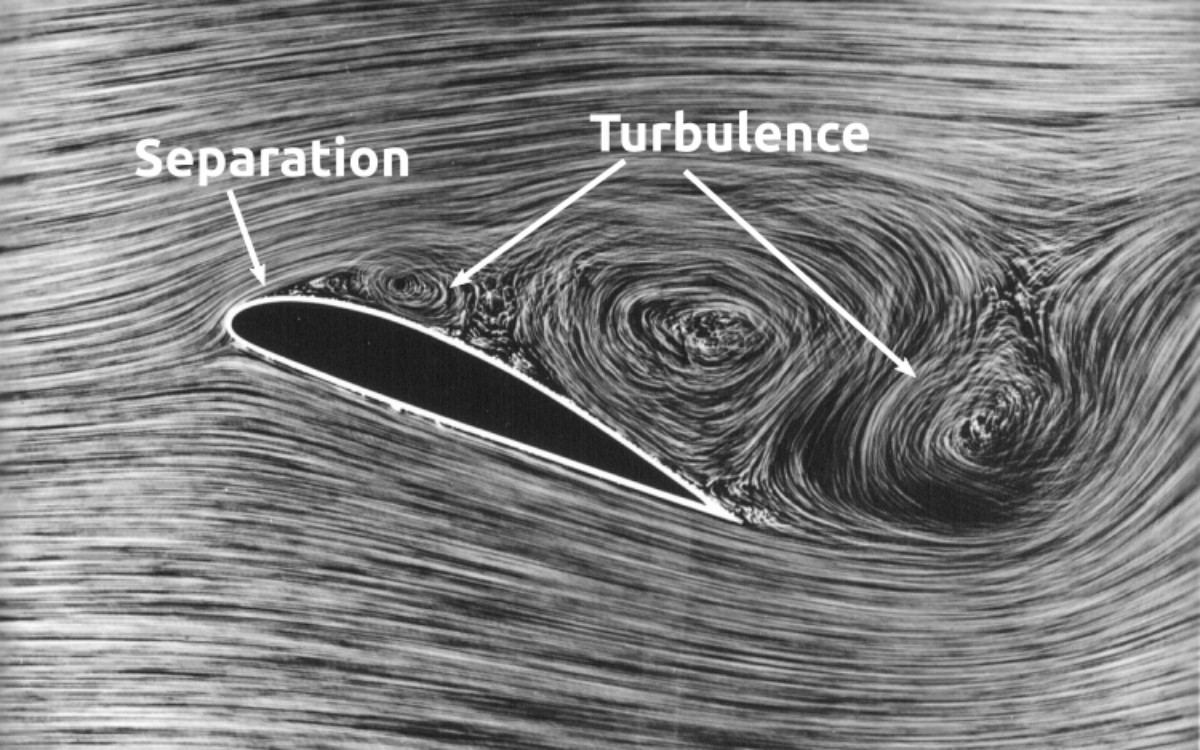
So far we have assumed that air is always attached to the surface of the wing. This is not always the case! If the angle of attack is too large, the air will not stick to the upper surface but instead generate vortices and turbulence as it passes above it. At this point the plane stalls, meaning that its wings can't generate enough lift to sustain it.
The two last accidents from the Boeing 737-8 MAX were a result of bad control of stall. The measuring system was giving an incorrectly high value of the angle of attack, even if the plane was flying at adequate values. The safety system of the planes were automatically activated to reduce the angle of attack by inclining the planes downward. The pilots were not able to override the incorrect action, and the planes ended up crashing against the ground.
Attaching the boundary layer: vortex generators
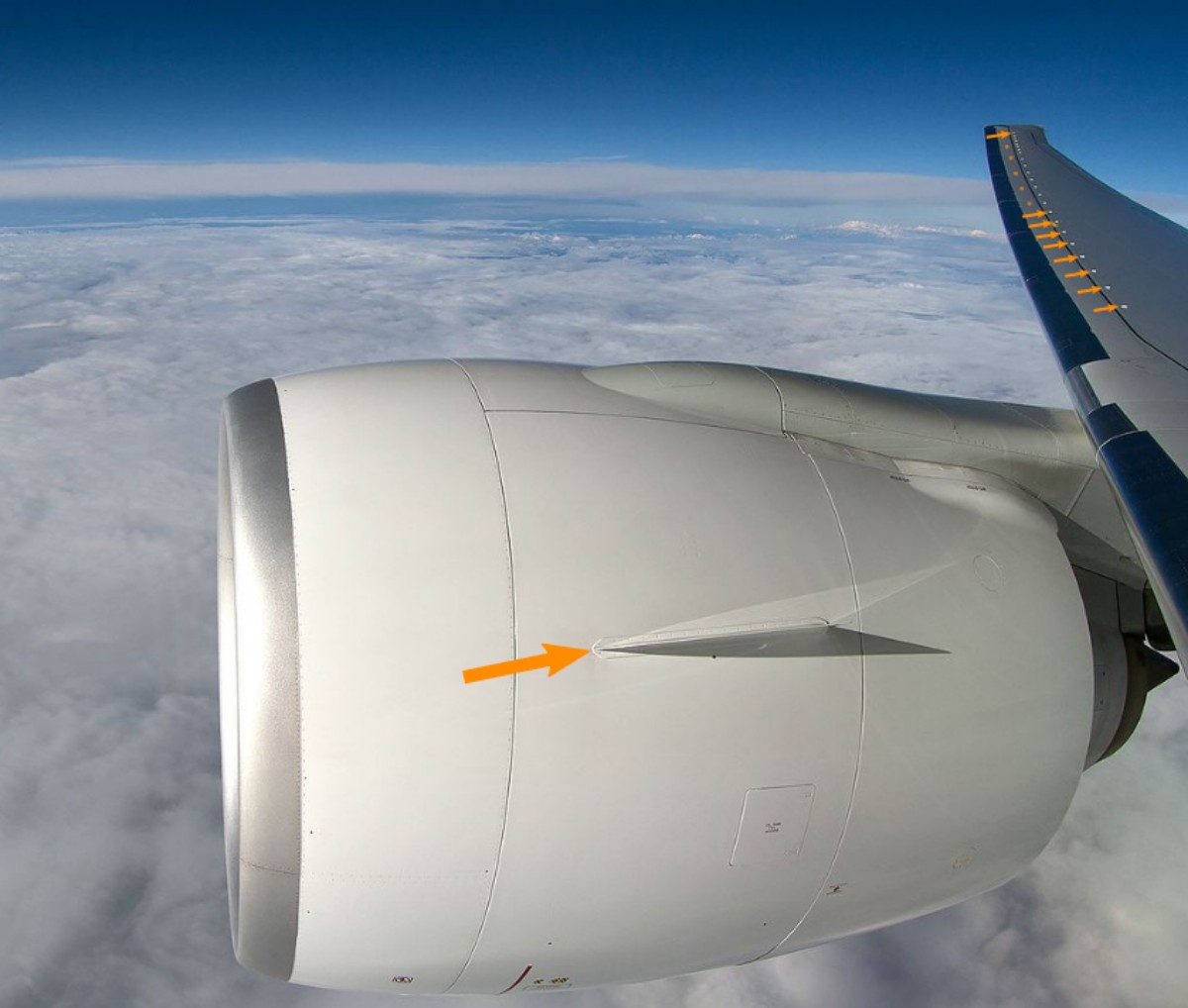
Limiting the angle of attack is a safe way to avoid separation. Another method is to add vortex generators along the wing. To understand how these work, we need the concept of the boundary layer.
As the air flow approaches the wings surface, its velocity is gradually reduced until it reaches zero at the walls. For low velocity air, the reduction starts relatively far from the walls and continues slowly towards it. Such profile is known as a laminar boundary layer. High velocity air contains more turbulence, allowing the high velocity air to be transported closer to the wall by the turbulent vortices and forming a turbulent boundary layer. Turbulent boundary layers are beneficial since they increase the chances of the air sticking to the wing surface. Their downside is that they cause more drag.
Vortex generators promote a turbulent boundary layer by forming vortices that mix the slow air near the wall with the faster one above. They are particularly useful when the planes reach low speeds during takeoff and landing, preventing the formation of a weak laminar boundary layer.
Large vortex generators are also added on the sides of the engines to improve flow attachment over the wing section right behind the engine. These have become a very important design feature as modern planes tend to have much larger turbofan engines than older models.
Vortex generators can also be used to reduce noise by breaking the periodic motions of the air which cause whistling sounds. In 2014, Lufthansa added several of these below the wings of their Airbus A320 planes, claiming a 4 decibel noise reduction during the approach.
Minimizing drag: winglets
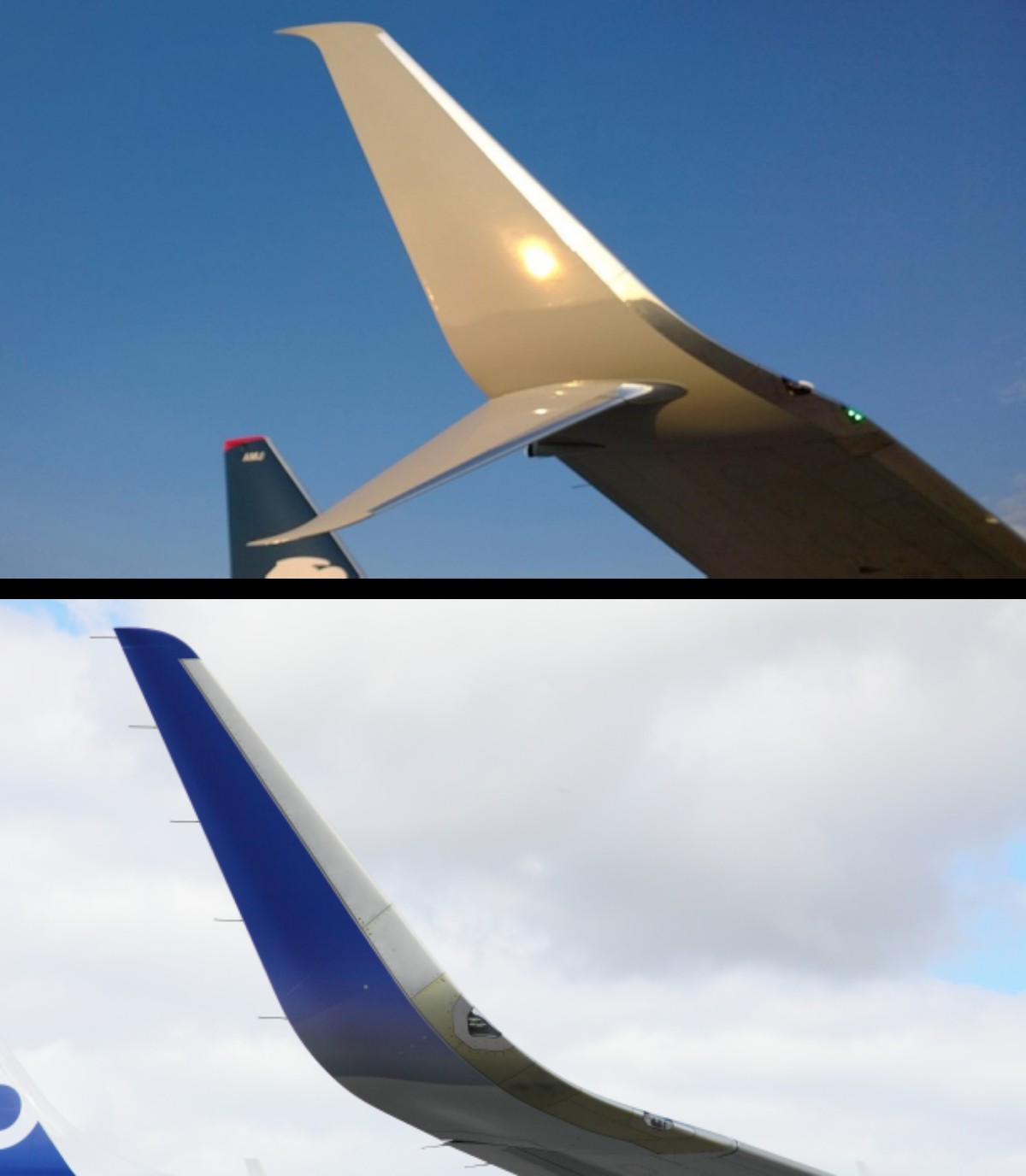
When the high and low pressure air meet at the tips of the wing, they generate a series of vortices that increase drag. To minimize this issue, planes extend the wing tips up or down to with a geometry that makes this merge as smooth as possible.
Boeing was the first to introduce winglets for commercial aviation back in 1988. Over time, their design has evolved to a split-tip winglet design found in most 737 MAX models. Airbus introduced their first “sharklets” in 2011 and, based on their data, it saves up to 4% of fuel due to lower drag.
Landing at low speeds: flaps
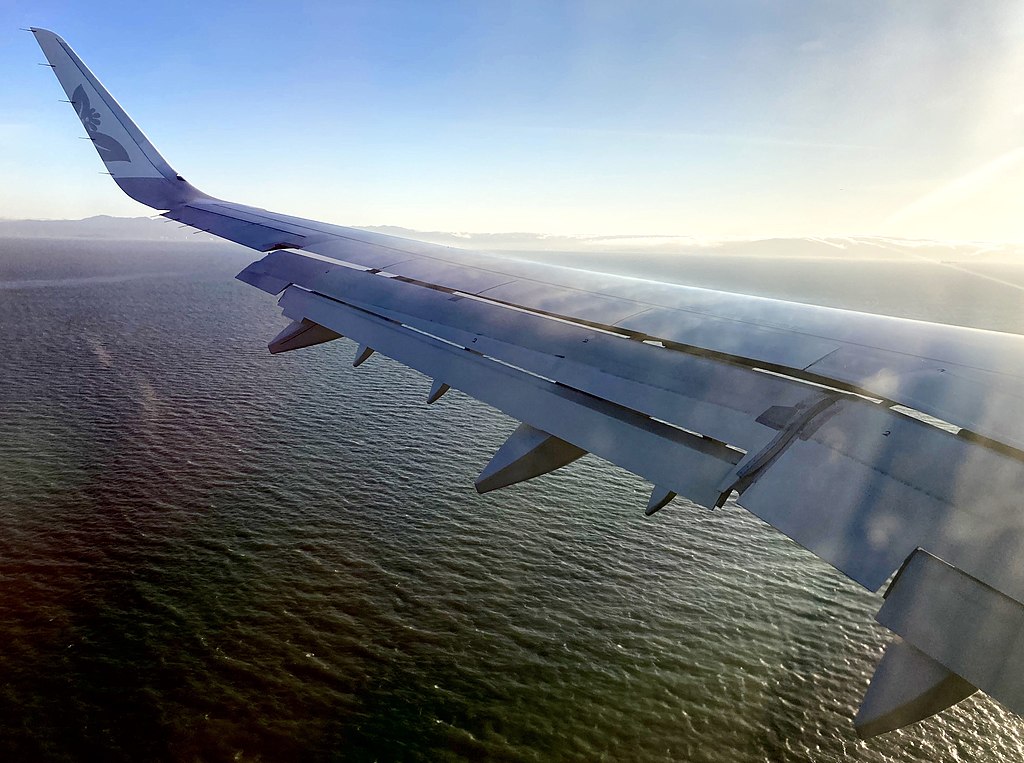
Landing at a low velocity is beneficial since it reduces the runway distance required to stop the plane. The problem is that at low velocities the wing might not be able to generate enough lift to sustain the plane. One option would be to increase the angle of attack by orienting the plane upwards, but this cannot be done since the plane needs to keep a downward trajectory during the descent.
This is where flaps come in: rather than changing the orientation of the plane, a moving surface is added to the trailing edge of the airfoil. When in need of high angles of attack such as landing, the surface is extended down; when cruising at high speeds, they are retracted to minimize interference with the air.
Moving around: ailerons, rudder and elevators.
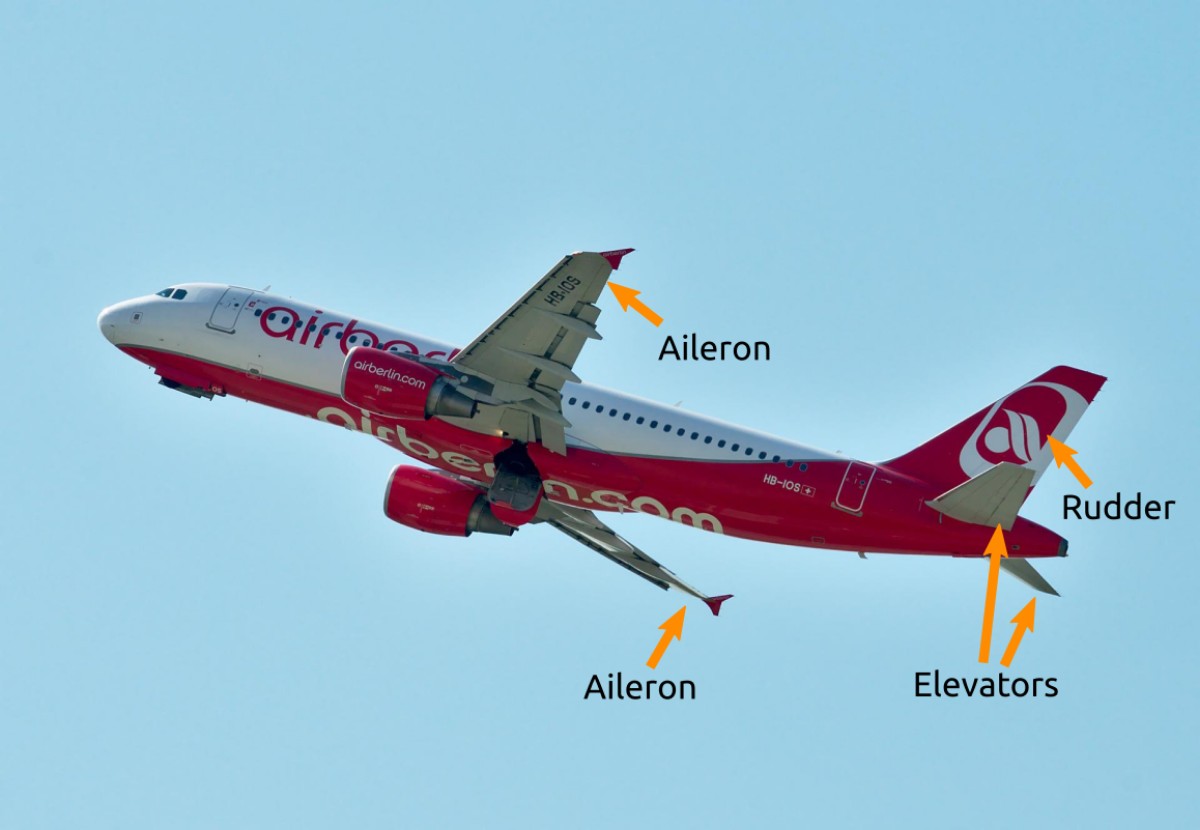
Like the flaps, ailerons are located at the end of the wings and can be extended down to increase the angle of attack and induce more lift. The difference is that they can also be extended up to block the air over the wing and decrease the lift. With this design, a plane can rotate by moving the ailerons up in one wing and down in the other.
The rudder of the plane work similar to the ones found in boats: a thin surface at the tail that when moved to the sides creates a sideways force that turns the plane left or right.
Lastly, the elevators are located beside the horizontal stabilizer of the plane. They allow the orienting the plane to up or down by moving them upwards or downwards, respectively. The ailerons, rudder, elevator and flaps can all move simultaneously to allow the plane take all its required manouvers.

